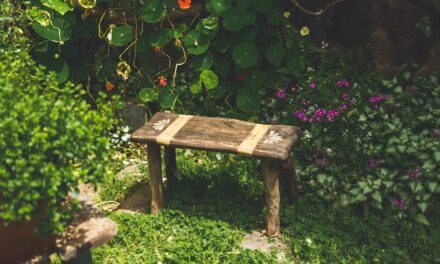Texture is an essential element in the world of visual art, providing depth, interest, and a tactile quality that can transform a flat surface into a dynamic experience. Artists have long sought ways to enhance their work through the manipulation of texture, and three materials stand out for their versatility and effectiveness: gesso, modelling paste, and gels. Each of these mediums offers unique properties that can be harnessed to create a variety of textures, from subtle to dramatic, allowing artists to express their creativity in multifaceted ways.
In this article, we will delve into the characteristics and applications of gesso, modelling paste, and gels, exploring how they can be used individually or in combination to build rich, textured surfaces. Whether you are a seasoned artist or a beginner eager to experiment, understanding these materials will empower you to elevate your artwork and engage your audience on a deeper level. Let us embark on this journey into the world of texture, where the possibilities are as limitless as your imagination.
Summary
- Gesso, modeling paste, and gels are versatile materials that can be used to add texture and dimension to artwork.
- Gesso is a primer that can be used to prepare surfaces for painting and create texture when mixed with other materials.
- Modeling paste is a thick, white paste that can be used to build up texture and create three-dimensional effects in artwork.
- Different types of gels, such as gloss, matte, and heavy, can be used to create various textures and effects in artwork.
- Layering gesso, modeling paste, and gels together can create complex and visually interesting textures in artwork.
Understanding Gesso: What it is and How to Use it for Texture
Creating Texture with Gesso
When applied in thick layers or combined with other materials, it can create an array of effects that enhance the visual appeal of a piece. To use gesso for texture, artists can experiment with different application techniques. For instance, applying gesso with a palette knife can yield raised areas and ridges, while using a brush can create softer textures.
Introducing Granularity and Depth
Additionally, gesso can be mixed with other mediums such as sand or sawdust to introduce granularity and depth. The key is to explore the material’s properties and find the right balance between thickness and fluidity to achieve the desired effect.
Painting Over Gesso
Once dry, gesso can be painted over with acrylics or oils, allowing the textured surface to interact with the paint in intriguing ways.
Creating Dimension with Modeling Paste: Techniques and Tips
Modelling paste is another powerful tool in the artist’s arsenal when it comes to building texture. Unlike gesso, which is primarily used as a primer, modelling paste is designed specifically for creating three-dimensional effects on surfaces. It is thicker than gesso and can be sculpted or carved once dry, making it ideal for artists looking to add significant dimension to their work.
The paste is typically made from acrylic polymer emulsions mixed with various fillers, resulting in a versatile medium that adheres well to most surfaces. To effectively use modelling paste for texture creation, artists can employ various techniques. One popular method involves applying the paste with a palette knife or spatula to create raised patterns or forms.
Artists can also use stencils or stamps to imprint designs into the paste before it dries, allowing for intricate detailing. For those seeking a more organic look, manipulating the paste with fingers or tools can yield unique textures reminiscent of natural elements like bark or stone. As with gesso, layering is key; multiple applications of modelling paste can build up substantial texture that invites viewers to explore the artwork closely.
Exploring Different Types of Gels for Texture Building
Gels are yet another category of mediums that artists can utilise to enhance texture in their work. Available in various formulations—such as gloss, matte, and heavy body—gels offer unique properties that can influence the final appearance of a piece. They are often used to modify the consistency of paint or as a standalone medium for creating textured surfaces.
The versatility of gels allows artists to experiment with transparency and sheen, adding another layer of complexity to their textured artworks. When exploring different types of gels for texture building, artists should consider how each formulation interacts with other materials. For instance, heavy gels can be used to create impasto effects when mixed with paint, while lighter gels may be ideal for glazing techniques that allow underlying textures to show through.
Additionally, gels can be combined with other mediums like acrylics or inks to create mixed media pieces that boast both colour and texture. The key is to experiment with different combinations and applications until you find the perfect balance that resonates with your artistic vision.
Layering Techniques: Using Gesso, Modeling Paste, and Gels Together
One of the most exciting aspects of working with gesso, modelling paste, and gels is the ability to layer these materials for complex textures.
Layering not only adds depth but also allows for the interplay of different textures and finishes that can enhance the overall composition.
To effectively layer these materials, artists should begin by applying a base layer of gesso to prime the surface. Once dry, modelling paste can be added in specific areas to create dimension. After this layer has cured, gels can be applied over the top to introduce additional texture or modify the sheen of the surface.
This process can be repeated multiple times, allowing for an intricate build-up of materials that culminates in a visually striking piece. The key is to allow each layer to dry thoroughly before adding the next; this ensures that the textures remain distinct and do not blend into one another.
Adding Colour and Effects to Textured Surfaces
Once the desired texture has been achieved using gesso, modelling paste, and gels, artists often turn their attention to colour application. The interplay between texture and colour can dramatically affect the mood and impact of an artwork. Various techniques can be employed to add colour while respecting the integrity of the textured surface beneath.
One effective method is to use dry brushing techniques with acrylic paints. This involves using a dry brush loaded with paint to lightly skim over the raised areas of texture, allowing the colour to catch on the peaks while leaving recesses untouched. This technique not only highlights the texture but also creates a sense of depth through contrasting tones.
Alternatively, artists may choose to apply washes or glazes over their textured surfaces; this approach allows colour to seep into crevices while maintaining transparency over raised areas. Experimenting with different colour applications will enable artists to discover unique effects that complement their textured work.
Tools and Equipment for Working with Gesso, Modeling Paste, and Gels
To effectively work with gesso, modelling paste, and gels, artists should equip themselves with a variety of tools designed for application and manipulation. Essential tools include palette knives in various sizes for spreading and sculpting materials; brushes specifically designed for acrylics; and sponges for creating softer textures or blending colours seamlessly into textured surfaces. In addition to these basic tools, artists may also benefit from using stencils or stamps for adding intricate designs into modelling paste or gels before they dry.
A range of texturing tools—such as combs or textured rollers—can also be employed to create unique patterns within these mediums. Ultimately, having a well-rounded selection of tools will empower artists to explore their creativity fully and achieve their desired results when working with these versatile materials.
Finishing and Sealing Textured Artwork: Tips for Longevity and Preservation
Once an artwork has been completed and allowed sufficient time for drying, it is crucial to consider how best to finish and seal it for longevity. Textured surfaces can be particularly vulnerable to damage from dust or moisture; therefore, applying a protective sealant is essential for preserving the integrity of the piece over time. Artists often opt for acrylic varnishes—available in both matte and gloss finishes—to protect their textured artworks.
These varnishes not only safeguard against environmental factors but also enhance colour vibrancy while providing a uniform finish across the surface. When applying varnish over textured areas, it is advisable to use a soft brush or spray application method to avoid disturbing the underlying textures. Additionally, artists should ensure that all layers are completely dry before sealing; this will prevent any unwanted reactions between materials that could compromise the artwork’s integrity.
In conclusion, building texture with gesso, modelling paste, and gels opens up a world of creative possibilities for artists seeking to enhance their work’s visual impact. By understanding each medium’s unique properties and employing various techniques—ranging from layering to colour application—artists can create stunning textured surfaces that invite exploration and engagement from viewers. With practice and experimentation, anyone can master these materials and elevate their artistic expression through texture.
If you are interested in exploring different art techniques, you may also enjoy reading about


